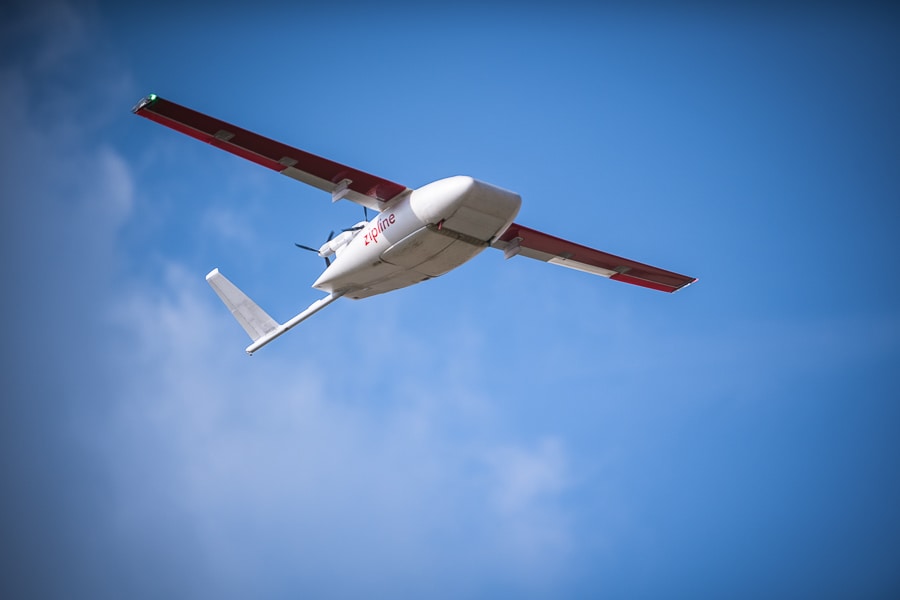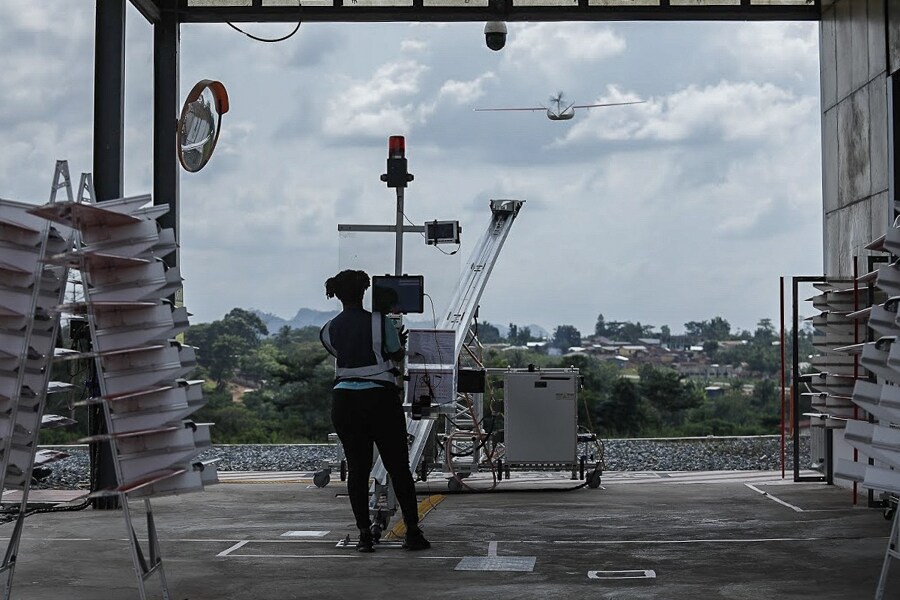Yet, Zipline—one of the largest medical product delivery companies globally—has delivered over 2.5 million vaccine doses worldwide via drones, including tens of thousands of Covid-19 vaccines to people in remote areas of Ghana. Via Zipline"s drones, vaccines can be transported to regions outside urban centres in 30-45 minutes in temperature-controlled conditions, minimising the potential for wastage.
Recently, Zipline has also announced a partnership with Pfizer to design and test an end-to-end delivery solution to safely, efficiently and equitably deliver all Covid-19 vaccines in countries where Zipline operates.
The San Francisco-headquartered company has also applied to operate in India and participate in beyond visual line of sight (BVLOS) trials. In an email interview with Forbes India, Dan Czerwonka, head of global regulatory affairs at Zipline, talks about the impact of delivering vaccines via drones and the challenges. Edited excerpts:
So far, how successful have Covid-19 vaccine deliveries been?
Our partnership with Ghana marked the first national-scale automated delivery of Covid-19 vaccines. To date, we’ve distributed tens of thousands of doses to rural communities. Our plan in Ghana is to be ready to distribute up to 43 percent of the nation’s vaccine supply from the COVAX facility—serving rural and ex-urban communities.
Our response to the pandemic goes beyond distributing vaccines. In Ghana, the ministry of health has used Zipline not only to distribute PPE in the early stages of the pandemic, but to accelerate the movement of Covid-19 test samples. We’ve also stepped up our distribution of routine vaccinations. At the outset of the pandemic, Zipline increased delivery of routine vaccinations tenfold as traditional ground transportation was severely disrupted. During an emergency, it’s more important than ever to keep your medical supply chain working, and Zipline provided that flexibility and resilience to the healthcare system.
By when can we expect Zipline to start delivering vaccines and medical supplies in India?
From our work in places like Ghana and Rwanda, we’ve seen the tremendous potential for automated deliveries—but the aircraft itself is just one component of an effective Covid-19 vaccine distribution programme. Success requires an entire professional medical fulfillment and warehousing operation staffed by pharmacists and medical professionals with specialised extremely low temperature cold storage equipment to maintain vaccine viability.
This is Zipline’s specialty, and Zipline stands ready to deploy its systems in any market where we have regulatory approvals to operate, to ensure that every citizen has access to the Covid-19 vaccine and any other medical product, and that health workers have all the supplies they need to treat any patient, no matter where that patient lives. We have been engaged in a variety of conversations around medicine and vaccine delivery in India, including exploring formal government and private sector partnerships.
What kind of challenges do you face being a drone-tech player in India?
With any new technology, anywhere, there’s a certain community acceptance curve. Across the board, our top priority is safety, and our closest partners are aviation authorities. We work very closely with these organisations to ensure they understand the ins and outs of our safety and reliability so everyone can feel comfortable with their deployment.
Are there any trials that are in process at the moment in India?
The DGCA has granted preliminary approvals for several consortia to conduct a few limited beyond visual line of sight (BVLOS) early stage trials. Zipline has applied to operate in India and to participate in these BVLOS trials.
How cost-effective would vaccine delivery via drones be as opposed to the traditional distribution methods?
Specific distribution costs are relative to each market, varying by factors including region, volume of demand and delivery distance, but Zipline’s logistics system as a whole is designed to be operationally and financially sustainable, as well as scalable, in any active market. This has been proven in countries such as Ghana and Rwanda, where Zipline has been a sustaining piece of national healthcare infrastructure for several years.
To measure the cost effectiveness of delivery by autonomous drones compared to traditional ground shipping methods, you can’t just look at the unit costs of shipping. What Zipline is helping solve is not just the challenge of getting vaccines to the right place in the right quantities at the right time it is solving a host of underlying logistical and supply chain challenges.
![]() The DGCA has granted preliminary approvals for several consortia to conduct a few limited beyond visual line of sight (BVLOS) early stage trials. Zipline has applied to operate in India and to participate in these BVLOS trials Image: Zipline[br]
The DGCA has granted preliminary approvals for several consortia to conduct a few limited beyond visual line of sight (BVLOS) early stage trials. Zipline has applied to operate in India and to participate in these BVLOS trials Image: Zipline[br]
By using long-distance drones to transport vaccines, you can centralise storage to a much greater degree, and reduce reliance on either expensive refrigerated shipping, or unreliable methods like motorbikes. Delivering the quantities you need when you need them eliminates the need for cold chain infrastructure like freezers in rural healthcare facilities and distribution centers, significantly reducing not only cost but complexity. In any global vaccination effort, reducing complexity is the key to increasing efficiency, driving down cost and wastage so that the healthcare system can focus on what it knows how to do best—administering vaccines.
How many countries is Zipline present in?
We have partnered with the national governments of Rwanda and Ghana, and the governments of both Kaduna and Cross River states in Nigeria. We have also operated in the United States. In India, we signed agreements with Maharashtra and Telangana to explore automated deliveries, pending the right regulatory environment.
Zipline has been working in the space of medical supply deliveries in other countries for a while. Why is it that trials for the same have started this late in India?
Unmanned aircraft technology offers an amazing amount of benefits to a wide array of industries—especially in the medical sector where just-in-time delivery can save lives. Transforming the management of medical supply chains to use drone networks can save hundreds of millions of dollars in reduction of medical product waste and expiry. I often refer to the Unmanned Aircraft System (UAS) revolution as the ‘Second Golden Age of Aviation’—the full extent of which has yet to be realised.
However, this massive opportunity is not without challenges. For example, the rapid developments in UAS technology, with an ever-expanding array of use cases and platforms, have so far outpaced regulatory efforts to facilitate their widespread use at scale. In India, as in many other countries, such efforts are built on traditional manned aviation industry principles, which did not contemplate the possibility of one day having aircraft flying overhead with no humans aboard. This is especially true in the case of small UAS (like Zipline’s 21kg aircraft) where many concepts and requirements for commercial manned aircraft are either a poor fit or wholly inapplicable, but are applied to small UAS by default, until new regulatory frameworks can be developed.
So many countries, including India, are still getting up to speed on the challenges, safety and security concerns, and opportunities presented by UAS technology, and are at various stages of progress in developing regulatory frameworks that can enable these systems to be deployed effectively at scale.

 Zipline has delivered over 2.5 million vaccine doses worldwide via drones, including tens of thousands of Covid-19 vaccines to people in remote areas of Ghana Image: Zipline[br]
Zipline has delivered over 2.5 million vaccine doses worldwide via drones, including tens of thousands of Covid-19 vaccines to people in remote areas of Ghana Image: Zipline[br] The DGCA has granted preliminary approvals for several consortia to conduct a few limited beyond visual line of sight (BVLOS) early stage trials. Zipline has applied to operate in India and to participate in these BVLOS trials Image: Zipline[br]
The DGCA has granted preliminary approvals for several consortia to conduct a few limited beyond visual line of sight (BVLOS) early stage trials. Zipline has applied to operate in India and to participate in these BVLOS trials Image: Zipline[br]